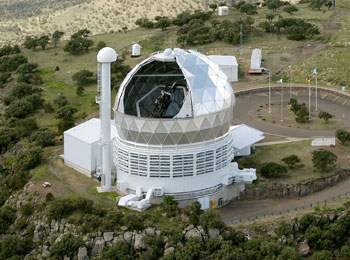Two large planets were discovered orbiting a star that does not contain many heavy elements, the assumption until now was that the formation of planets requires the existence of a certain amount of metals in the disk surrounding the star in its youth

When we look at the ground beneath our feet, we see materials formed in the hearts of stars at the end of their lives. Some of the heavier elements were formed when massive stars exploded as supernovae. In many cases, these elements have passed through several generations of stars. So there was a huge surprise this week when astronomers discovered planets orbiting a metal-poor star.
The discovery was made by a team of researchers from the University of Texas, who used the 9.2 meter Hobby-Eberly telescope at the McDonald Observatory. They discovered a system in which two Jupiter-like planets orbit a star so poor in metals that there shouldn't be any planets around it at all, but they do.
The star, named HD 155358, and the holiday planets around it were discovered using the radial velocity method, in which the gravitational force from the planets pulls the star back and forth at a speed we can detect from Earth. This allows astronomers to calculate their masses and the length of their orbits.
One of the planets orbits the star in an orbit that took 195 days and spent about 90% of that of Jupiter. The second mass is 50% that of Jupiter and it circles its sun in an orbit that is 530 days long, however it is not a circular orbit and moreover the orbits also come very close to each other, it is possible that there is a gravitational connection between the two planets pushing each other around the star.
The common model for the formation of the planets requires the presence of a large amount of heavy elements in the planetary disk from which the planets are formed. Finding a star with such a low metal content, but holding a system of at least two planets, is an impressive discovery, which will give astronomers reason to reconsider their theories.
Recently the 236th planet was discovered outside the solar system and in many systems more than one planet was discovered. All of them differ from each other in their properties and conditions, many of them are gas giants very close to their sun, even closer than Mercury to our sun.
